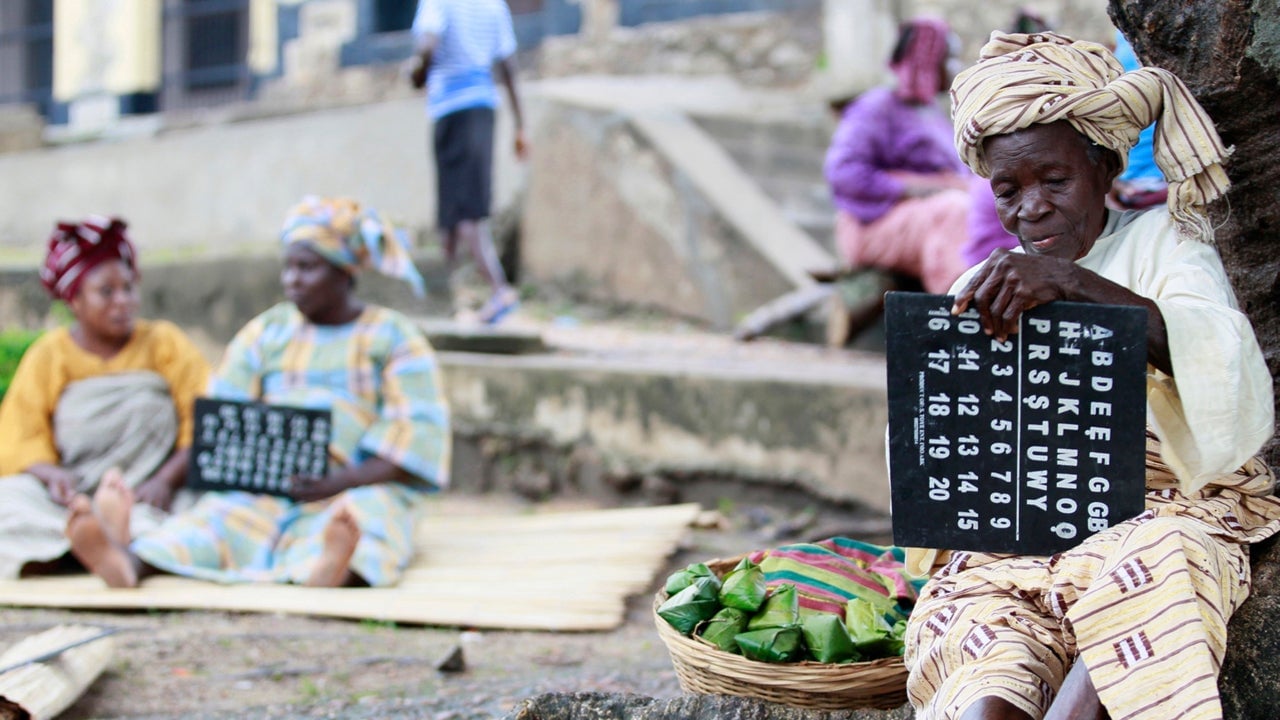Tech savvy innovators are in a race to save their African languages and boost literacy
This year, scientists discovered the oldest drawing made by humans—a 73,000-year-old design of parallel and oblique lines. The red ochre on rock has value far beyond its historical significance—it shows that Africa was the site of complex syntactic language. It shows that humans were using a drawn language to make sense of their surroundings and create culture and symbolism.


This year, scientists discovered the oldest drawing made by humans—a 73,000-year-old design of parallel and oblique lines. The red ochre on rock has value far beyond its historical significance—it shows that Africa was the site of complex syntactic language. It shows that humans were using a drawn language to make sense of their surroundings and create culture and symbolism.
And yet, Africa in the contemporary imagination is a continent without written language, making histories vulnerable to loss. After nearly two centuries of colonization it’s perhaps unsurprising that African languages have lost their place at the high table of diplomacy, leadership, but most importantly with education.
English, French and Portuguese and more recently, even Mandarin have been the languages of education for young Africans trying to speak to the world. But Africa is the home of 2144 languages. While most development theoreticians consider this a barrier to economic and social growth sociolinguists and educationists know better: the African continent’s multilingualism is a powerful resource.
In recent years, young Africans are experimenting with new digital platforms and technologies to save African languages and passing them on to the next generation.
Sometimes that means passing the language on to a generation growing up in the diaspora through YouTube tutorials. In other cases, that means writing children’s books in languages like Igbo to incorporate African languages into mainstream education, or even writing romance novels in Hausa, aimed at women in northern Nigeria, whose stories often go unheard.
Perhaps the most famous example so far was the use of Nsibidi symbols as the written language of Black Panther’s Afrofuturist kingdom of Wakanda. That many of these examples are found in Nigeria, the country with arguably the continent’s richest English literary tradition, shows the innovation of this new generation of linguists using technologies taken for granted to disrupt the norm.
Each year, as Quartz Africa scours the continent for our annual innovators list, the team is confronted with the meaning of innovation on a continent that has so much need, but also potential. This year, that was particularly evident with innovators who found ways to preserve their cultural heritage through new techniques.
In Egypt, Ghada Wali uses Lego blocks to teach students the Arabic language, thereby changing the very way this centuries-old language is taught. With “Let’s Play,” the 28-year-old graphic designer and artist used typography and script to bridge the cultures and histories of the different peoples who speak the language.
Throughout much of the continent, however, low literacy levels remain a barrier to access the technologies that are changing the rest of the globe. In Mali, where the United Nations estimated that the adult literacy rate was at 33.4% (figures from 2012), the number of mobile phones has risen rapidly.
After studying abroad, Mamadou Sidibe returned home with plans to take advantage of this new ubiquity of mobile phones, but he soon found that applying the text-based model of messaging apps would not work in a country where people could successfully run a small business without being able to read.
So Sidibe launched Lenali, a voice-based social network. With plans to expand to other countries, Sidibe’s invention capitalizes on the way that people already communicate, and in turn ensures that they are not left behind by the technological revolution.
In any society, language and how it is used captures the identity of a people. The current innovations in language not only capture an image of Africa today, but what more the continent could be.
Sign up to the Quartz Africa Weekly Brief here for news and analysis on African business, tech and innovation